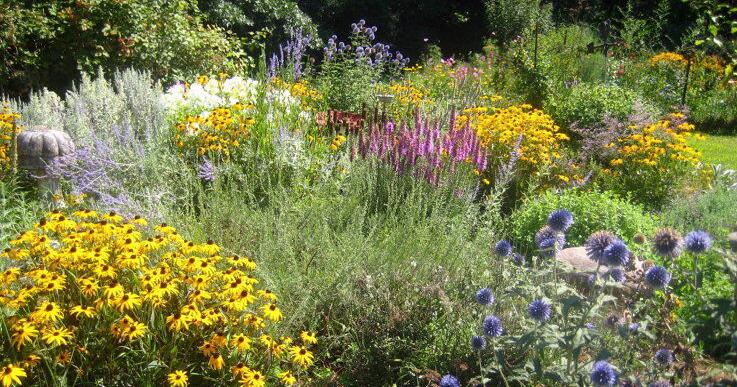Who doesn’t want to save money on property taxes?
The Pennsylvania Farmland and Forest Land Assessment Act of 1974 — aka Act 319, or the Clean & Green Act — is a preferential tax assessment program that bases property taxes on use values rather than fair-market values.
The program was launched to encourage landowners to retain their property as farmland, forest land or open space by providing the financial incentive of tax relief. The legislation was also enacted to protect farmers and other landowners from being forced out of business or to sell because they could not meet escalating property tax burdens.
Despite the potential cost savings, even as development pressure increases land values along with possible future assessments, many eligible landowners do not participate, in part because they do not understand or are misinformed about the program and its nuances. Following is a list of seven common misconceptions about Clean & Green and a rundown on why they are false.
1) I need to own at least 10 acres to be eligible.
Actually, you can have fewer than 10 acres and enroll, as long as you are producing and selling an agricultural product.
“The rule of thumb is if you have less than 10 acres, you have to show that you have a gross income of $2,000 a year in an agricultural commodity,” said Lorna Oswalt, residential/preferential land assessor for Berks County.
Deva Sullivan harvests garlic scapes off of 1 acre of land under cultivation at a 3-acre residence in Mertztown, Pennsylvania. While the farm met the $2,000 minimum gross revenue requirement of Clean & Green, the owner opted out of enrolling because he wasn’t sure how long he would be farming and did not want to face paying rollback taxes.
What constitutes an “agricultural commodity” is broad and includes basically any cash crop or livestock. New applicants must document that they’ve met the threshold of gross income for three years prior to applying for the program and must maintain it to stay enrolled.
Counties, which individually administer the state program, may offer some leeway if, say, a frost decimates your modest orchard one year and you fall short.
“There is the act of Mother Nature; we can’t help for that,” Oswalt said. “But if it goes three years in a row that you can’t make the $2,000, we have to take you out of the program.”
2) If I leave the program, I have to pay back taxes in perpetuity.
If you disenroll for any reason, you must pay the difference between your regular assessment and what you saved (rollback taxes), plus 6% compounded interest, for a maximum of seven years.
3) The program is only for farmland.
Three categories are eligible: 1) Agricultural Use (actively being farmed), agricultural reserve (at least 10 tillable acres), and forest reserve (at least 10 acres, with a minimum of 51% of the land capable of producing timber or other wood products).
4) I cannot combine separately deeded parcels of land.
“If your parcels are contiguous and they total over 10 acres, you could qualify,” Oswalt said. “The rule of thumb is you have to have at least 10 consecutive acres, and if you have three parcels that are contiguous to each other that equal that, you could be eligible for the program.”
5) If I’m enrolled in Clean & Green, my property must be open to the public.
Only land in agricultural reserve must be open to the public, according to the statute: “free of charge, on a non-discriminating basis as to sex, age, nationality, etc. Use of the lands by the public must be permitted for passive activities such as hunting, fishing, hiking, bird watching, etc.” Enrolled active farmland and forest reserve properties do not require public access.
This 4-acre homesite is now eligible for Clean & Green since the homeowner purchased contiguous wooded property bringing the total to more than 10 acres.
6) If I sell the land, I have to pay rollback taxes.
“Some people don’t understand Clean & Green,” Oswalt said. “If you have a Clean & Green parcel and it’s been in Clean & Green for a couple of years — whether it’s two years or 25 years — and you sell it to someone, we just continue that Clean & Green covenant. We just have the new people fill out a new Clean & Green application, so that the covenant would now be in the new owner’s name.”
In the rare case that the new owner does not wish to stay enrolled, she said, who pays the rollback taxes would be a matter to negotiate at closing (and not a matter for the county assessor’s office), but the tax savings would have to be paid back to the county for the amount of time that the property was enrolled, or for seven years, whichever is less.
7) If I’m enrolled in Clean & Green, I cannot sell or subdivide part of my property.
There are two ways land can be separated under Clean & Green: by Split-Off or Separation.
Split-Off: “When you are already in Clean & Green, you can split off a maximum of 10% of your total acreage, but no more than two acres in a calendar year,” Oswalt said. “So, if you have 15 acres and you’re in Clean & Green, you can split off a maximum of 1.5. You have to pay rollback taxes on that acreage that you take out, that’s the only penalty for that.”
If you take out more than 10%, or more than 2 acres in a calendar year, she said, you breach the entire parcel and would be required to pay the rollback taxes on the entirety, going back up to seven years.
Separation: “If you have a 30-acre parcel and you want to split it between you and your two siblings, you can split it into three parcels, make it three 10-acre parcels,” Oswalt said. “They all stay in Clean & Green. No rollbacks, no breach. They’re just connected to each other for the next seven years.
“After that, they’re on their own, and say one of your siblings says, ‘Oh, I’m going to build a mobile home park on my 10 acres.’ Their 10 acres will come out of Clean & Green, but it won’t affect the other 20 acres, the other two 10-acre parcels.”
But if a sibling were to change to such commercial use inside of seven years, the whole original parcel would be subject to rollback taxes.
“If they wait the seven years after a separation in Clean & Green, they only have to worry about their parcel and their rollback taxes on the 10 acres for seven years.”
Oswalt encourages interested property owners to contact their county assessment office with any additional questions about Clean & Green.
“The basis for the program is to help farmers alleviate some of the tax burden,” she said. “That was the gist of it when it was passed.”







